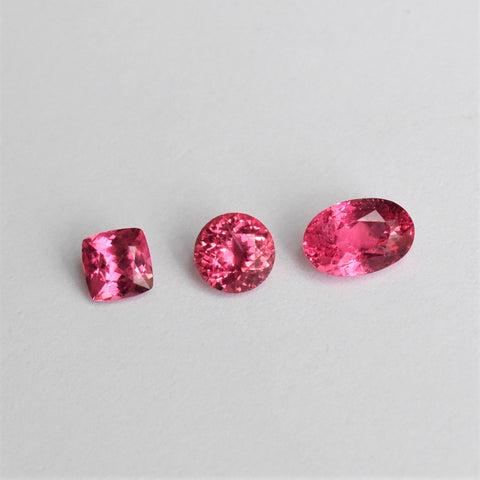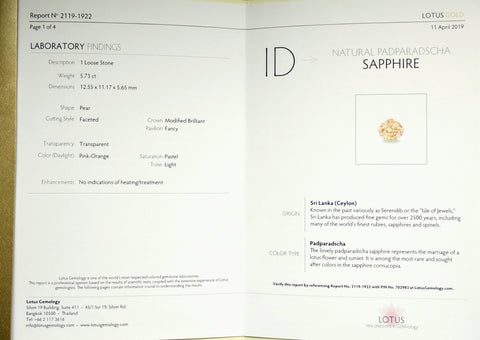Once upon a time - in the not too distant past, in fact - jewelry shopping was so easy and straightforward: you would go to what they called a "storefront." This was a building with doors, and inside was a counter with a display of goods. There would be a salesperson explaining the various options and prices to you, you could take your time browsing items and seeing how they look on you, maybe get a gift wrap, and walk out with the coveted piece.
Things have changed, haven't they? Here you are, sitting on your couch with your phone, iPad, what have you, googling what you think you want (If it is what you want, you don't even know) and getting hundreds of pages with wares that make your eyes glaze over. You are wondering if those things would even suit your style, your makeup, hair, tone. And then, there it is, the item you think will work, it's not expensive, shipping from somewhere far away. Shipping is - oops, an additional $20, but the photos look pretty and the gem is a nice glowy blue.
A few weeks hence, your item arrives but it's not really what you were looking for. The ring doesn't look nice on you, and now you've done more reading you realize that you should have asked if the gem was treated. You write an email to that effect but no answer. There's tons of information on the web and you are overwhelmed, a return is time consuming and expensive.
Sound familiar? I buy a lot of stuff online myself, and I often feel exactly like that. It can be hard to shop online when you don't know what you are looking for and you can get lured in by a low price, especially when you use price as a sorting factor. To give an example, while I buy clothes online, I use either US sellers with an easy and fast return or, as in the case of my favorite Etsy vendor Xiaolizi, I first made a sample purchase, figured out what works for me from their shop, and then became a repeat buyer, not having to worry about returns because I know I am getting the goods and service I want. Xialoizi prices are a little higher than my in store price point but I get the personal attention I want from my shopping experience and way more customization options. So compared to what it would cost in Jersey City to have my own tailor, I am actually making out.
Yvonne at the AGTA show wearing Xiaolizi design (Etsy vendor)
How do you know if an online vendor is a wholesaler?
With online shopping, the wholesale retail difference is less obvious, but it is still there. Wholesalers operate with a lower markup but they require volume purchases and they can't take out much time for extra photos, and videos.
Their shops are not curated because they need to move all the product they have invested in, and in a speedy way so you find either just a selection of their goods online, or no prices, or many offered lots instead of individual items. While returns are not customary in wholesale, online return options are the law in the US (even if you are dealing with someone who is a private seller by the way), so those are available but if you are buying from overseas returns can take a long time and rather than the seller providing you with the extra help you need to make a decision, it will be up to be an informed buyer. So the likelihood of a return is increased.
Here's an example of how wholesale works in the gem show world: to exhibit at a gem show can easily cost you $10,000 plus, add to that travel, staff, and preparing/processing merchandise which can take weeks (sorting and pricing goods, getting them ready for display). If you do 10 shows a year and are a small wholesale business employing one or two people, I would estimate you will want to make at least $100,000 at a show - at an AGTA or JCK show that figure is a lot higher but this includes after show sales. (For now let's leave anything about cost of goods sold out of the equation). That means you need sales of $20,000 a day if it's five days, $2500 per hour!
So, if I come along with my $500 budget and shop for 60 minutes, they lose money, even though in my eyes $500 would suggest to me that they should at least give me an hour of their time.
It's the same with online purchases. It would be impossible for a true wholesale online merchant to spend 60 minutes on a small purchase. They are better off quickly negotiating a big sale, send you what you need for viewing and you decide without their help on what you need, send back the rest with a check for the difference.
This is the established way and it works well once you know each other and trust each other. A low markup on goods - the reason to buy wholesale of course - implies a sales process that is quick and painless and it implies repeat business. In addition, and this is important, both seller and buyer have the same level of expertise regarding the product, quality and current pricing, making the painful return policy unnecessary. You inspect before you pay and then you're done. When you shop at a wholesale show it is the same. There's no "I had a change of heart," or "my dishwasher broke," or "I did my research and this is more expensive than it should be."
What does Retail Buying do for you?
Meanwhile the retail online seller like us, provides or should provide, an entirely different buying experience.
1. A retail seller does not get to assume that a buyer has the same level of expertise, making it obligatory to educate the buyer and give full disclose of what's important to the buyer (i.e. the risks of a cleaning product to kids or pets).
2. A retail seller takes out more time to help a buyer make an educated decision, possibly help with style, color, or anything else relevant when the product is online. They take the extra photos and videos needed, and answer questions promptly and completely.
3. A retail seller should provide a curated experience of well selected goods for their clientele, not overwhelm them with tons of stuff that is of interest for a different client base.
4. And most importantly, a retail seller must have a solid inspection and return policy! Repeat business is good for everyone (for the buyer too), but this means that the seller's objective should be to protect the buyer, keep her investment safe, and meet her expectations when she receives her goods, not to go for the quick "one off".
Cecile Raley Designs return & exchange policy
























































